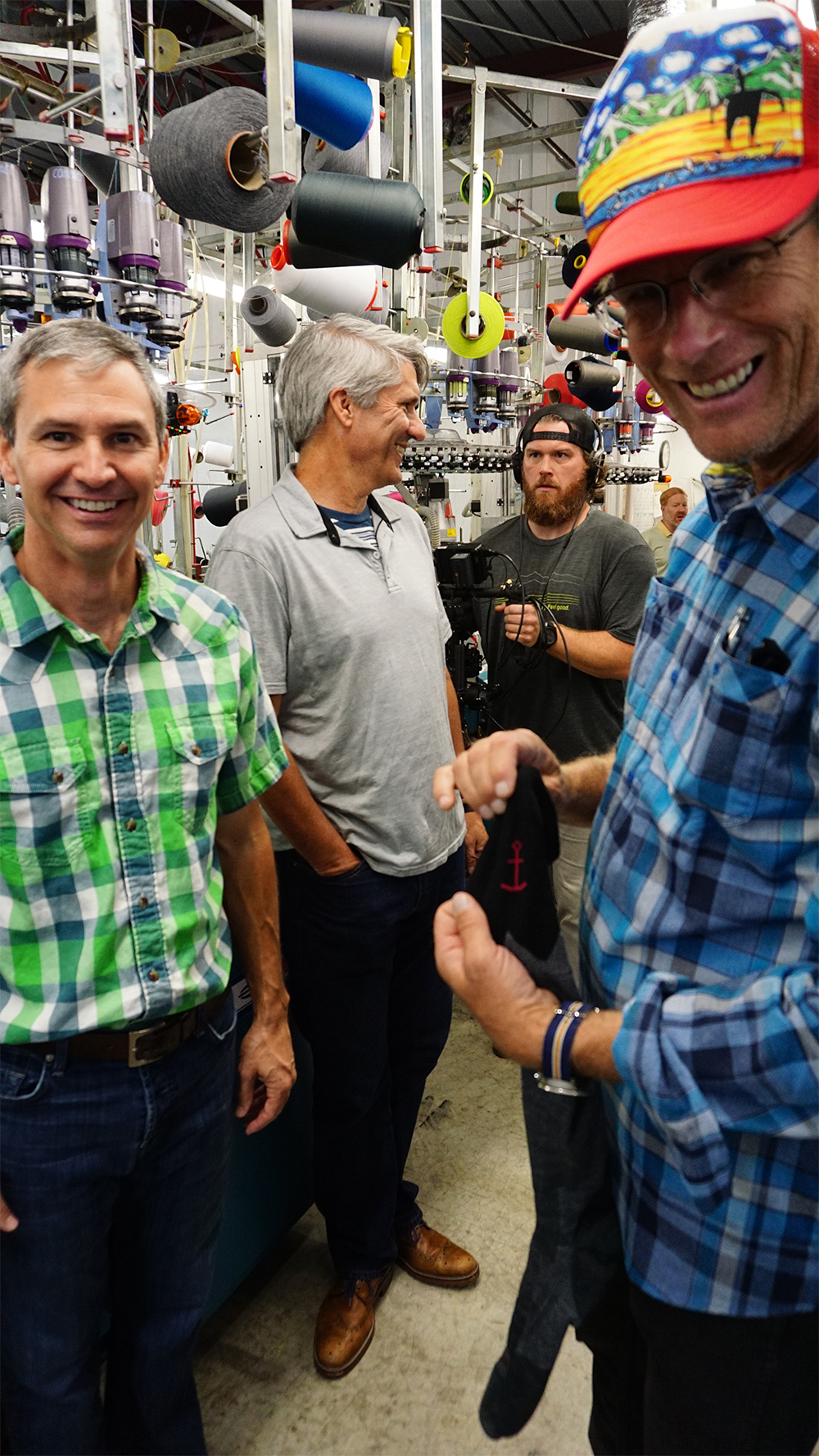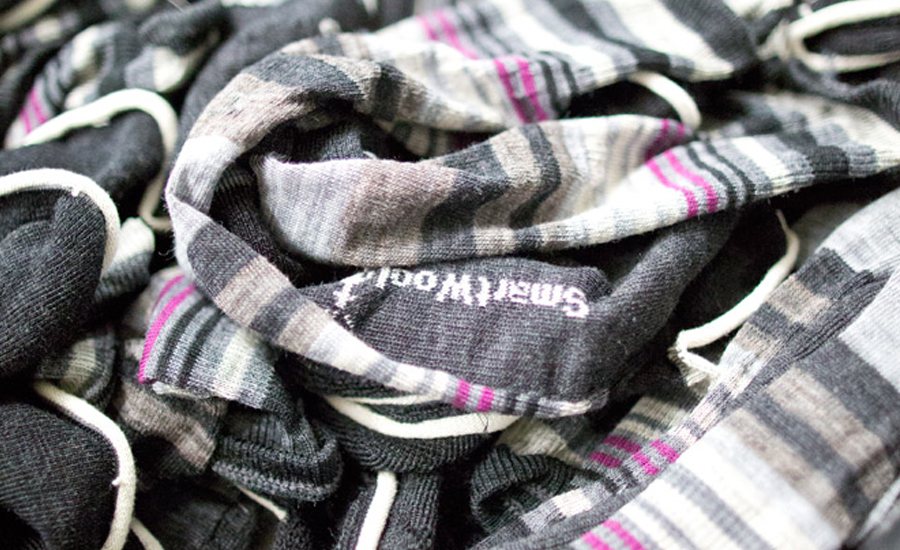Why the future of domestic manufacturing is more of a tech story than you think.
Inside a nondescript factory nestled in the remote green hills surrounding Chattanooga, TN lies the future of U.S. manufacturing for the active lifestyle industry.
While some might romanticize that “Made in the USA” means the return of millions of jobs from overseas, the reality inside this building and others like it across America is that it is filled with millions of dollars of
machines.
We’re at one of Smartwool’s manufacturing partners’ facilities watching the machines spit out complete, high-performance merino wool socks in a matter of minutes. There’s even a mechanical process that will turn them back from inside-out after knitting.
Yes, these factories still need a talented group of Americans to run the machines, Smartwool Director of Development for Socks John Ramsey tells us, but about two people can run 30 machines each. This factory has hundreds of machines, so there are a couple dozen employees, plus those who wash, inspect and package the socks. The minimal headcount greatly evens the playing field versus cheap, overseas labor costs and provides unparalleled lead-time, quality and shipping cost benefits.
It’s why most performance socks for the active lifestyle consumer are made in the U.S.
“Labor is obviously cheaper overseas, but the latest and greatest tech is here,” Ramsey said.
Ramsey, who represents the fourth generation of his family in the U.S. sock-making business, remembers his father telling him to “look for something special,” in the 1990s as jobs making tube socks were shipped offshore, overnight.
He found Smartwool and partnering plants in Tennessee and North Carolina that were willing to invest in the technologies that could keep up with brand demands. That kind of innovation and work can only be done face-to-face, Ramsey said, with designers and technicians constantly tinkering with the machines.

Look at a modern performance sock today — the snug fit, elaborate designs and durability are a lot more complex than you’d think. That virtually seamless closed toe of the sock — all done by machines now — took decades to perfect. It used to have to be done by hand.
“In our work, figuring out the [automated] close toe was like inventing the iPhone,” Ramsey said. Walk into any of these U.S. performance sock factories, whether its Smartwool, Darn Tough Vermont or Fox River, and you can’t help but think: ‘This isn’t an active lifestyle company… it’s a hi-tech company.’
Beyond Socks
So, we’re making socks here. Wave the Stars and Stripes. But what about shirts, pants and shoes? Check your labels — they still say Made in China, Vietnam or Bangladesh.
Apparel requires much more cut-and-sew work, Ramsey pointed out. And the machines aren’t quite there…yet.
Whole-garment manufacturing — as it’s called — in fact, exists today, he said. Machines can churn out ready-to-wear dresses, but it’s still too slow and too expensive.
“In our work, figuring out the [automated] close toe was like inventing the iPhone.”
– John Ramsey, Director of Sock Development, Smartwool

“I don’t know how close it is, but I can tell you, it’s coming,” Ramsey said. “They will figure it out.” And that’s when he projects we’ll see the real explosion in ‘Made in the USA’ labels and a return of American brands to their hometowns.
Look around the active lifestyle industry and you can see brands experimenting with the technology. Advances like The North Face’s Fuse Form fabric — where machines weave different densities of material across a single sheet of fabric in order to reduce cut-and-sew work while delivering body-mapped performance. At the same time, Nike, Adidas and Under Armour are debuting knitted shoes, not just because they look cool, but because their machines can automate that kind of production. And 3D printing is bound to revolutionize the hardgoods space.
So, if you’re looking for the next big tech boom, forget Silicon Valley and take a trip to Tennessee.
Photos courtesy Smartwool










